‘I envy you your voyage to India,’ Léon Spilliaert (1881–1946) wrote to his friend, the Austrian poet, novelist and inveterate traveller Stefan Zweig, on 24 November 1908. ‘I hope to be able to make it one day.’ The Belgian painter had been hatching schemes for long excursions abroad for many years – in 1903, he had tried and failed to enlist for service in the Congo; the following year, he’d harboured hopes of moving to Paris. But when he wrote to Zweig, the 27-year-old artist had just rented a small attic studio on the fisherman’s quay at Ostend – the small coastal town where he had grown up and where, but for stretches in Brussels during the First World War and during his final years, he would live for the rest of his life.
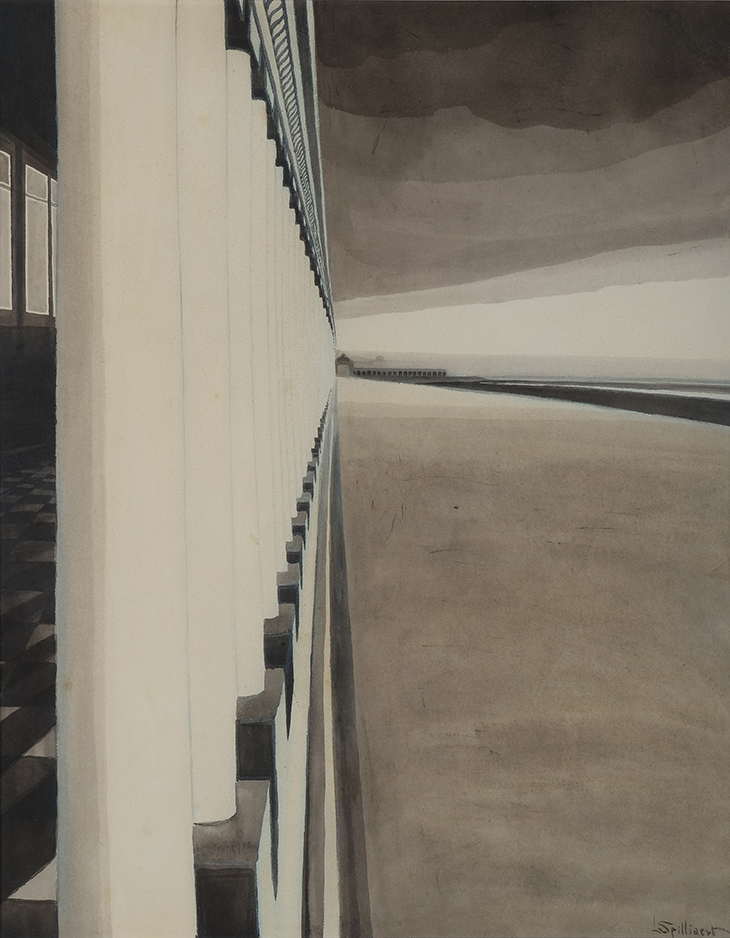
The Royal Galleries at Ostend (1908), Léon Spilliaert. Private collection. Photo: © Daniël De Kievith
From his garret, Spilliaert could spy beaches with long promenades and breakwaters, built, along with the ostentatious Royal Galleries, on the order of Leopold II half a century before. Prone to long, solitary walks – partly to placate his insomnia, brought on by chronic stomach ulcers; partly in emulation of his idol Friedrich Nietzsche – Spilliaert knew the buildings of Ostend intimately and painted them to the point of obsession. Dramatic perspectives by turns place the viewer high up in Spilliaert’s attic, looking down on the town below, or on the ground, nose virtually pressed against the stone. One of the revelations of the Royal Academy’s current exhibition – the first survey in the UK of an artist long celebrated in his own country – is the degree to which works such as the ghostly Hofstraat, Ostend (1908) or Promenade with Lighthouse (1908) prefigure, and in sheer strangeness even surpass, the Surrealist architectural compositions of De Chirico a decade later. The remarkable Royal Galleries at Ostend (1908) trammels the horizontal plane of the marble colonnade into a minute width, creating an impossibly close vanishing point that, paradoxically, seems to stretch out the cloister to infinity.
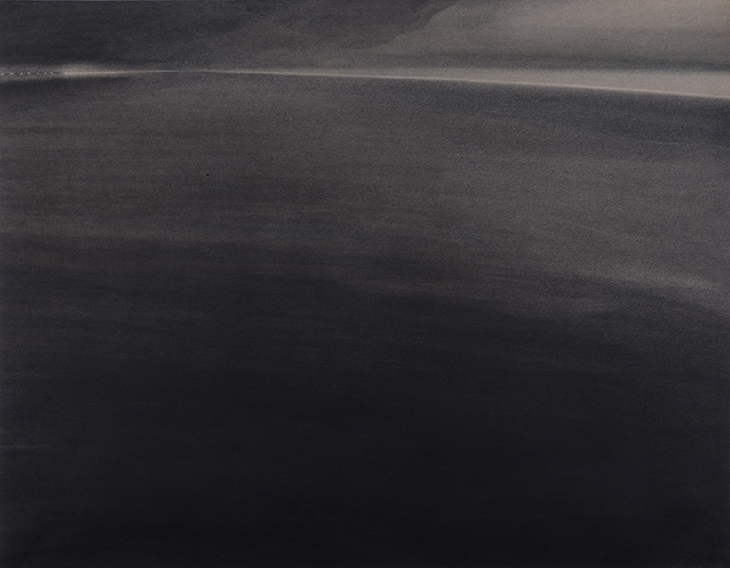
Seascape Seen from Mariakerke (1909), Léon Spilliaert. Private collection. Photo: © Daniël De Kievith
Beyond the town lay the sea – the site of Spilliaert’s imagined but never realised voyages, and the protagonist of his most haunting works. In his earliest paintings, like the moody-blue pastel Seascape with Beacons (c. 1900), it is abstracted and flat. However, eschewing oil paint to develop his own peculiar combinations of ink, watercolour, pastel, and coloured pencil, Spilliaert created a medium fit to plumb the depths of his subject. With a work such as Seascape Seen from Mariakerke (1909), you peer into the layers of India ink – shade upon shade of black – as though into mist, until a stray brushstroke or a scrub-mark that reveals the paper beneath reminds you that you’re looking at a two-dimensional surface. The immediate physical sensation is a kind of retinal whiplash – but as the process is repeated in seascape after seascape it amounts at last to something more like yearning: wishing yourself into another world while unable to forget where you are. Repeatedly, the faint twinkling of lights by night, or the dark mass of stone by day, appears at the edge of a high horizon – a reminder that the promontory always curves back round.
It is the sense of the uncanny working hand in glove with the familiar that sets Spilliaert apart from Symbolist precursors such as Edvard Munch or Odilon Redon. Spilliaert was close to the Belgian Symbolist poets in his younger years. In 1903 he was commissioned to illustrate by hand the publisher Edmond Deman’s personal copy of Théâtre: a three-volume edition of Maeterlinck’s plays, amounting to some 770 pages of drawings. But in 1904, Spilliaert declared: ‘Symbolism, mysticism, it’s all madness, sickness.’ Despite long friendship, his work also bears very little resemblance to that of James Ensor, Ostend’s most famous artistic son. Spilliaert’s painting of the decade from 1904–14, on which the curators of this display have judiciously focused, is that of an artist who has shunned external influences in favour of personal solitude and his morbid curiosity in what he found to hand.
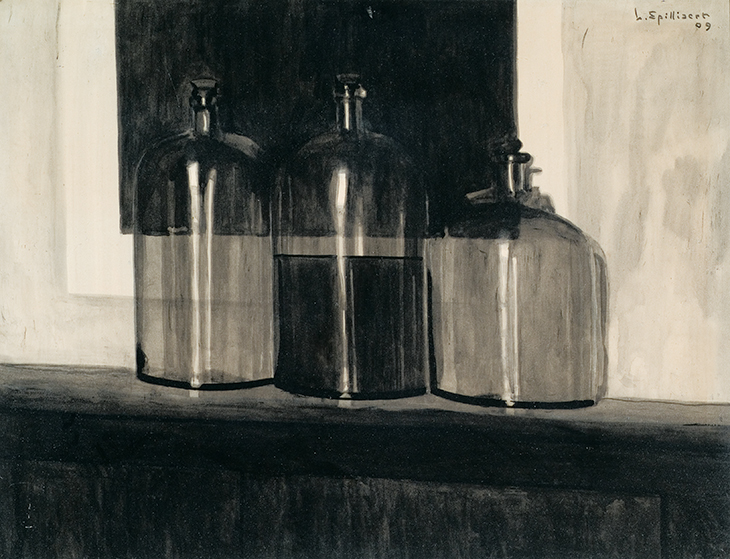
Flasks (1909), Léon Spilliaert. Private collection
Nightmarish figures appear in these paintings – his Gust of Wind (1904) might almost be a pendant to Munch’s Scream, while the lips of his Absinthe Drinker (1907), tinged with his signature shade of ultramarine, make her seem like something out of a Tim Burton film. But Spilliaert is at his spookiest when depicting reality – whether turning his gaze to the ocean, or focusing on more inward mysteries. Sullen tonal combinations of mauve, white and blue, in a series of 1908–09, render his bedroom claustrophobic and poised for some supernatural event. In Flasks (1909), the vials used by his father, a perfumier, take on an enigmatic monumentality worthy of Giorgio Morandi. The vast bulk of an aircraft Hangar (1910) is made to look rickety and insubstantial by the jet-black mass of water it stands beside. Gowns hanging on the rack of the Hairdresser’s Salon (1909) morph into shadowy figures in profile.
In the celebrated series of self-portraits he made throughout his twenties, the artist himself appears curiously static. He’s caught in one of two poses – staring straight at the viewer or, more often, glancing fearfully over his left shoulder. But all the while, the world around him – glimpsed in the reflections of a mirror, or the window before which the artist is cast into shade – shifts and mutates. The tonal wizardry of these works – the overlapping layers of deep black ink offset by scuffed patchworks of pastel – needs to be seen up close. But for the moment, while the Academy is closed, Spilliaert offers an example of how much you can see by staying right where you are.

Silhouette of the Artist (1907), Léon Spilliaert. Museum voor Schone Kunsten, Ghent. Photo: Hugo Maertens
The Royal Academy of Arts, London is temporarily closed to the public due to the Covid-19 outbreak. For more information on ‘Léon Spilliaert’ (scheduled to run until 25 May) visit the institution’s website. You can also take a virtual tour of the exhibition.
Unlimited access from just $16 every 3 months
Subscribe to get unlimited and exclusive access to the top art stories, interviews and exhibition reviews.

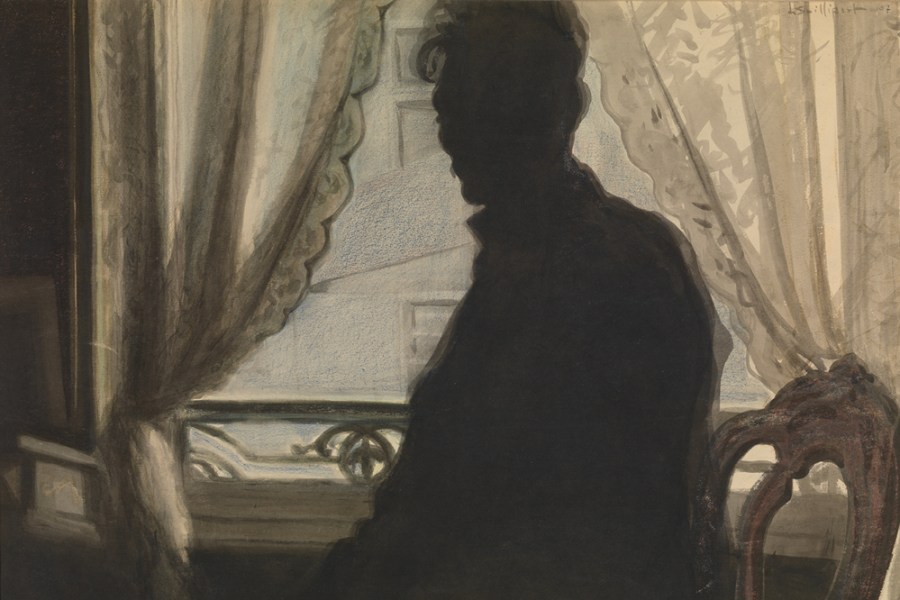
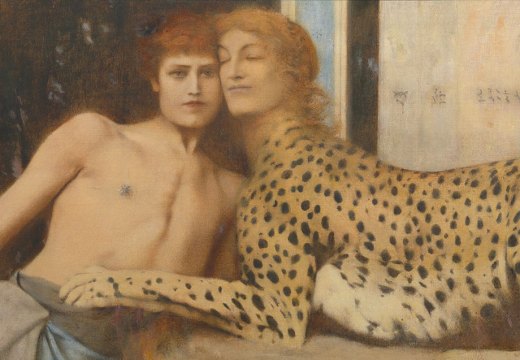
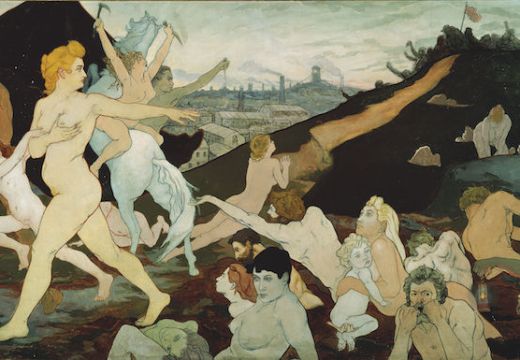
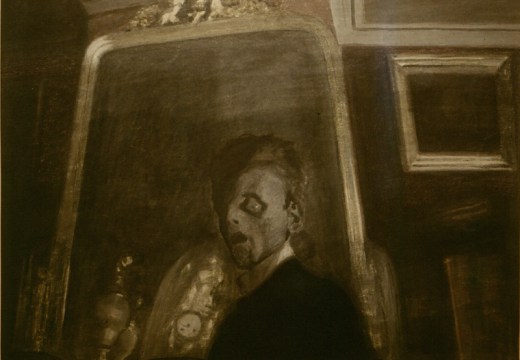









![Masterpiece [Re]discovery 2022. Photo: Ben Fisher Photography, courtesy of Masterpiece London](http://www.apollo-magazine.com/wp-content/uploads/2022/07/MPL2022_4263.jpg)
It’s time for the government of London to return to its rightful home